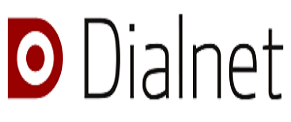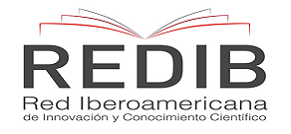A paradigm shift in the role of NSAIDs in COVID-19: new pathological mechanisms and potential treatment targets
Palabras clave:
Paradigm Shift, NSAIDs, Covid-19, COX-2 inhibitorsResumen
Objectives: The pathogeny of SARS-COV2 infection is currently not well defined. In this paper, we present a new perspective of how the SARS-CoV2 infection can lead to severe cases and potential pathways of preventing such cases.
Methods: In the first part, we describe the role of cyclooxigenase 2 and in the second part, we describe the role of hypoxia inducible factor (HIF).
Findings: We hypothesize that cyclooxigenase 2 and hypoxia inducible factor with subsequent inflammation and hypoxia can up-regulate each other in a vicious circle of feed-forward that can ultimately lead to “cytokine storm”.
Conclusions: Breaking this cycle early potentially will have beneficial effects either by improving oxygenation (oxygen being given earlier in the course of the treatment) or by inhibiting COX-2. We also believe, that the use of COX-2 inhibitors early in the course of the disease can improve the outcome and clinical trial are urgently needed.
Descargas
Citas
Raaben M, Einerhand AW, Taminiau LJ, et al. Cyclooxygenase activity is important for efficient replication of mouse hepatitis virus at an early stage of infection. Virol J. 2007;4(55):1-5. https://doi.org/10.1186/1743-422X-4-55
Amici C, Di Caro A, Ciucci A, et al. Indomethacin has a potent antiviral activity against SARS coronavirus. Antivir Ther. 2006;11(8):1021-1030.
Abecassis M, Falk J, Dindzans V, et al. Prostaglandin E2 (PGE2) alters the pathogenesis of MHV-3 infection in susceptible Balb/cJ mice. Adv Exp Med Biol. 1987;218:465-466. https://doi.org/10.1007/978-1-4684-1280-2_58
Macphee PJ, Dindzans VJ, Fung LS, Levy GA. Acute and chronic changes in the microcirculation of the liver in inbred strains of mice following infection with mouse hepatitis virus type 3. Hepatology. 1985;5(4):649-660. https://doi.org/10.1002/hep.1840050422
Cole EH, Schulman J, Urowitz M, Keystone E, Williams C, Levy GA. Monocyte procoagulant activity in glomerulonephritis associated with systemic lupus erythematosus. J. Clin. Invest. 1985;75(3):861-868. https://doi.org/10.1172/JCI111784
Gaspar JM, Velloso LA. Hypoxia inducible factor as a central regulator of metabolism–implications for the development of obesity. Front. Neurosci. 2018;12:813. https://doi.org/10.3389/fnins.2018.00813
Yeo EJ. Hypoxia and aging. Exp Mol Med. 2019;20;51(6):1-15. https://doi.org/10.1038/s12276-019-0233-3
D’Ignazio L, Bandarra D, Rocha S. NF-?B and HIF crosstalk in immune responses. FEBS J. 2016;283(3):413-424. https://doi.org/10.1111/febs.13578
Ren L, Zhang W, Han P, et al. Influenza A virus (H1N1) triggers a hypoxic response by stabilizing hypoxia-inducible factor-1? via inhibition of proteasome. Virology. 2019;530:51-58. https://doi.org/10.1016/j.virol.2019.02.010
Kaidi A, Qualtrough D, Williams AC, Paraskeva C. Direct transcriptional up-regulation of cyclooxygenase-2 by hypoxia-inducible factor (HIF)-1 promotes colorectal tumor cell survival and enhances HIF-1 transcriptional activity during hypoxia. Cancer Res. 2006;66(13):6683-6691. https://doi.org/10.1158/0008-5472.CAN-06-0425
Csiki I, Yanagisawa K, Haruki N, et al. Thioredoxin-1 modulates transcription of cyclooxygenase-2 via hypoxia-inducible factor-1? in non-small cell lung cancer. Cancer Res 2006;66:143–150. https://doi.org/10.1158/0008-5472.CAN-05-1357
Sander WJ, O'Neill HG, Pohl CH. Prostaglandin E2 as a Modulator of Viral Infections. Frontiers in Physiology. 2017;8:89. https://doi.org/10.3389/fphys.2017.00089
Lebedeva ES, Kuzubova NN, Titova ON, Surkova EA. Effect of cyclooxygenase-2 inhibition on lung inflammation and hypoxia-inducible factor-1 signalling in COPD model. Eur Resp J. 2017;50: PA3926. https://doi.org/10.1183/1393003.congress-2017.PA3926
Kotzé-Hörstmann LM, Keswell D, Adams K, Dlamini T, Goedecke JH. Hypoxia and extra-cellular matrix gene expression in adipose tissue associates with reduced insulin sensitivity in black South African women. Endocrine. 2017;55:144–152. https://doi.org/10.1007/s12020-016-1089-0
Ribeiro AL, Correia J, Ribeiro V. Ethnic variability of HIF-1alpha polymorphisms. Cancer Biomark. 2009;5(6):273-277. https://doi.org/10.3233/CBM-2009-0112
Brasky TM, Bonner MR, Moysich KB, et al. Genetic variants in COX-2, non-steroidal anti-inflammatory drugs, and breast cancer risk: the Western New York Exposures and Breast Cancer (WEB) Study. Breast Cancer Res Treat. 2011;126:157–165. https://doi.org/10.1007/s10549-010-1082-xhttps://doi.org/10.1007/s10549-010-1082-x
Chan PC, Liao MT, Hsieh PS. The Dualistic Effect of COX-2-Mediated Signaling in Obesity and Insulin Resistance. Int J Mol Sci. 2019;20(13):3115. https://doi.org/10.3390/ijms20133115
Chan PC, Hsiao FC, Chang HM, Wabitsch M, Hsieh PS. Importance of adipocyte cyclooxygenase-2 and prostaglandin E2-prostaglandin E receptor 3 signaling in the development of obesity-induced adipose tissue inflammation and insulin resistance. FASEB J.2016;30(6):2282-2297. https://doi.org/10.1096/fj.201500127
Xu K, Sun X, Benderro GF, Tsipis CP, LaManna JC. Gender differences in hypoxic acclimatization in cyclooxygenase-2-deficient mice. Physiol Rep. 2017;5(4). https://doi.org/10.14814/phy2.13148
Cosentione F, Eto M, De Paolis P, et al. High Glucose Causes Upregulation of Cyclooxygenase-2 and Alters Prostanoid Profile in Human Endothelial Cells. Role of Protein Kinase C and Reactive Oxygen Species. Circulation. 2003;107:1017–1023. https://doi.org/10.1161/01.CIR.0000051367.92927.07
Furukawa S, Fujita T, Shimabukuro M, et al. Increased oxidative stress in obesity and its impact on metabolic syndrome. J Clin Invest. 2004;114:1752–1761. https://doi.org/10.1172/JCI21625
Huang W, Lin S, Chen H, et al. NADPH oxidases as potential pharmacological targets against increased seizure susceptibility after systemic inflammation. J Neuroinflammation. 2018;15(140):1-15. https://doi.org/10.1186/s12974-018-1186-5
Wang W, Suzuki Y, Tanigaki T, Rank DR, Raffin TA. Effect of the NADPH oxidase inhibitor apocynin on septic lung injury in guinea pigs. Am J Respir Crit Care Med. 1994;150(5):1449-1452. https://doi.org/10.1164/ajrccm.150.5.7952574
Bradshaw PC. Cytoplasmic and Mitochondrial NADPH-Coupled Redox Systems in the Regulation of Aging. Nutrients. 2019;11(3):504. https://doi.org/10.3390/nu11030504
Gomes AP, Price NL, Ling AJY. Declining NAD(+) induces a pseudohypoxic state disrupting nuclear-mitochondrial communication during aging. 2013;155(7):1624-1638. https://doi.org/10.1016/j.cell.2013.11.037
Descargas
Publicado
Cómo citar
Número
Sección
Licencia
Copyright and Licensing
For all articles published in Atena Journals, copyright is retained by the authors. Articles are licensed under an open access Creative Commons CC BY 4.0 license, meaning that anyone may download and read the paper for free. In addition, the article may be reused and quoted provided that the original published version is cited. These conditions allow for maximum use and exposure of the work, while ensuring that the authors receive proper credit.
Reproducing Published Material from other Publishers
It is absolutely essential that authors obtain permission to reproduce any published material (figures, schemes, tables or any extract of a text) which does not fall into the public domain, or for which they do not hold the copyright. Permission should be requested by the authors from the copyrightholder (usually the Publisher, please refer to the imprint of the individual publications to identify the copyrightholder).
Permission is required for:
- Your own works published by other Publishers and for which you did not retain copyright.
- Substantial extracts from anyones' works or a series of works.
- Use of Tables, Graphs, Charts, Schemes and Artworks if they are unaltered or slightly modified.
- Photographs for which you do not hold copyright.
Permission is not required for:
- Reconstruction of your own table with data already published elsewhere. Please notice that in this case you must cite the source of the data in the form of either "Data from..." or "Adapted from...".
- Reasonably short quotes are considered fair use and therefore do not require permission.
- Graphs, Charts, Schemes and Artworks that are completely redrawn by the authors and significantly changed beyond recognition do not require permission.
Obtaining Permission
In order to avoid unnecessary delays in the publication process, you should start obtaining permissions as early as possible. If in any doubt about the copyright, apply for permission. Atena Journals cannot publish material from other publications without permission.
The copyright holder may give you instructions on the form of acknowledgement to be followed; otherwise follow the style: "Reproduced with permission from [author], [book/journal title]; published by [publisher], [year].' at the end of the caption of the Table, Figure or Scheme.














